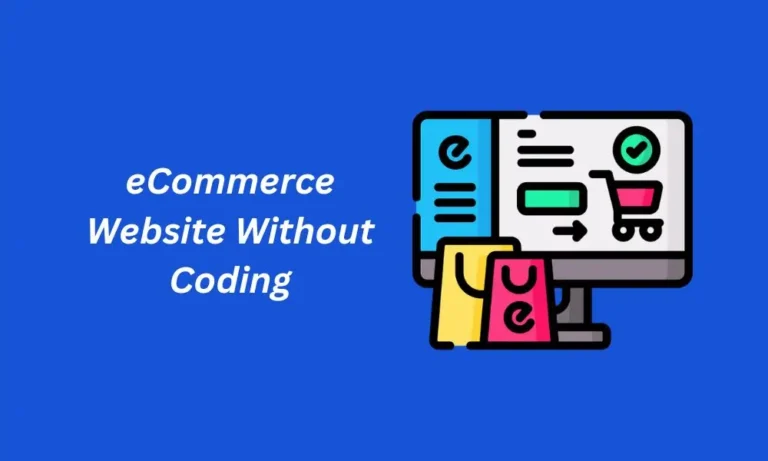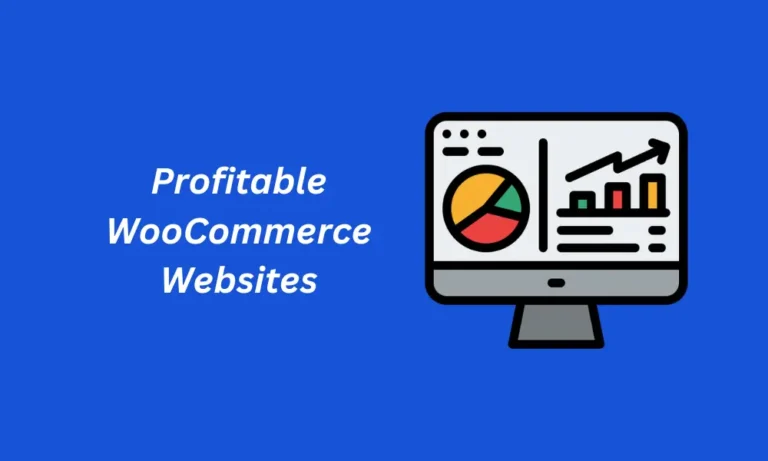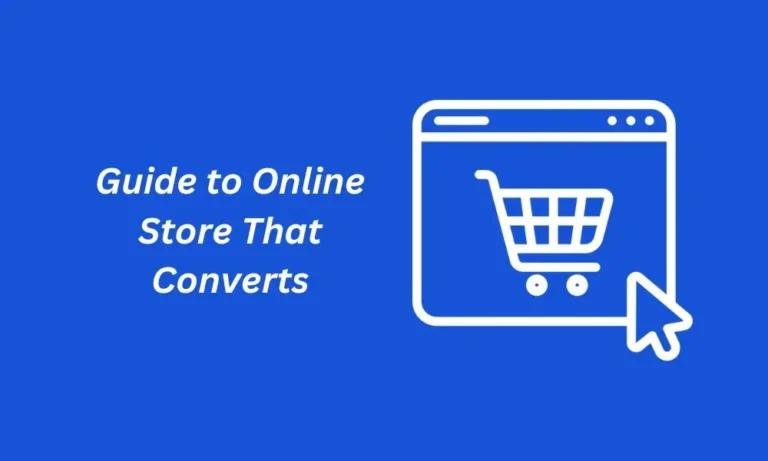If you want start an ecommerce business with no money, then you’re in the right place.
Introduction
In today’s digital age, starting an eCommerce business has never been more accessible, especially if you’re working with a tight budget. Contrary to popular belief, you don’t need a massive investment to launch a successful online store. With the right strategy and resources, you can start an eCommerce business with little to no money. In this comprehensive guide, I’ll walk you through the steps to start an ecommerce business with no money.
Table of Contents
Start an eCommerce Business with No Money
Here are step-by-step guide on how to start an ecommerce business with no money.
1. Choose Your Niche
Choosing a niche is the first and arguably the most critical step in starting your eCommerce business. Your niche will define the products or services you offer and help you target a specific audience. Here’s how to choose the right niche:

Identify Your Interests and Passions
Start by brainstorming areas that interest you. Your enthusiasm for a particular subject will make the journey more enjoyable and sustainable. Whether it’s fitness gear, pet products, or eco-friendly items, choose something you’re passionate about.
Conduct Market Research
Once you have a niche in mind, it’s time to validate it. Use tools like Google Trends to explore the popularity of your niche. Check out Amazon Best Sellers to see what’s trending and browse social media platforms like TikTok and Instagram for real-time trends. This research will help you understand the demand and competition in your chosen niche.
Analyze Competitors
Look at existing businesses in your niche. What are they doing well? Where can you differentiate yourself? Competitor analysis will help you identify gaps in the market that you can fill with your unique value proposition.
2. Find Free Tools and Resources
Starting an eCommerce business doesn’t have to be costly. Many free tools and resources can help you set up and manage your online store effectively.
Set Up Your Online Store
Platforms like Shopify offer free trials that allow you to build your store without immediate costs. If you’re comfortable with WordPress, WooCommerce is a free plugin that integrates seamlessly with it. Both options provide robust features to create a professional-looking store without upfront expenses.
Design and Branding
Creating a brand identity is crucial for your online business. Canva is an excellent tool for designing logos, social media graphics, and other marketing materials. It’s user-friendly and offers a variety of templates that can help you create professional designs without any design experience.
Free Images and Product Listings
Pexels and Unsplash provide high-quality, free stock images that you can use for your product listings and marketing materials. High-resolution images can significantly enhance the appeal of your online store and help attract customers.
Dropshipping and Print-on-Demand
Dropshipping allows you to sell products without holding inventory. You list items on your store, and when a customer makes a purchase, the supplier handles the fulfillment and shipping. Oberlo is a popular dropshipping platform that integrates with Shopify and offers a range of products to choose from.
Print-on-demand services like Printful or Teespring allow you to create custom products such as T-shirts, mugs, and phone cases. These platforms handle production and shipping, allowing you to focus on marketing and growing your business.
3. Build Your Online Store
With your niche and tools in place, it’s time to build your online store. Here’s how to create an appealing and functional eCommerce website:
Choose a Platform
Decide on a platform based on your needs and technical comfort level. Shopify is known for its ease of use and comprehensive features, while WooCommerce offers greater customization if you’re familiar with WordPress.
Design Your Store
Select a clean and simple design that focuses on user experience. Make sure your website is easy to navigate, with clear categories and a straightforward checkout process. A clutter-free design will help customers find what they’re looking for and reduce cart abandonment rates.
Optimize Product Listings
Create detailed product descriptions that highlight the benefits and features of your products. Use high-quality images and include multiple views if possible. Effective product descriptions and visuals can significantly impact your conversion rates.
Essential Pages
Include essential pages such as “About Us,” “Contact,” and “FAQs” on your website. These pages help build trust with potential customers by providing information about your business and addressing common questions.
4. Market Your Store for Free
Marketing your eCommerce store doesn’t have to cost a fortune. There are several free strategies you can use to drive traffic and attract customers.
Leverage Social Media
Social media platforms are powerful tools for promoting your products. Create engaging content related to your niche and share it on platforms like Instagram, TikTok, and Pinterest. Use high-quality visuals and incorporate relevant hashtags to reach a broader audience.
Join Online Communities
Participate in online communities related to your niche, such as Facebook groups and Reddit forums. Engage with the community by offering valuable insights and answering questions. Share your store’s link when appropriate, but focus on providing value rather than direct promotion.
Content Marketing
Start a blog related to your niche and publish informative and engaging content. Blogging can help drive organic traffic to your store and establish you as an authority in your field. Share your blog posts on social media and other platforms to increase visibility.
Email Marketing
Build an email list by offering a free resource or discount in exchange for visitors’ email addresses. Use email marketing to nurture leads and keep your audience informed about new products, promotions, and updates.
5. Utilize Affiliate Marketing
Affiliate marketing is a great way to earn additional income without upfront costs. Here’s how to get started:
Join Affiliate Programs
Sign up for affiliate programs related to your niche. Amazon Associates is a popular choice, allowing you to promote a wide range of products and earn commissions on sales made through your referral links.
Promote Affiliate Products
Incorporate affiliate links into your blog posts, social media content, and email newsletters. Make sure to disclose your affiliate relationships transparently to build trust with your audience.
Track Performance
Use analytics tools to track the performance of your affiliate links. Monitor which products and strategies are generating the most revenue, and adjust your approach accordingly.
6. Keep Costs Low
Managing your budget is crucial when starting a business with no money. Here are some tips to keep costs down:
Use Free Trials and Tools
Take advantage of free trials and tools to minimize expenses. Many platforms offer free versions or trials that allow you to test their features before committing to a paid plan.
Reinvest Profits
As your business starts generating revenue, reinvest profits into growth and improvement. Use the funds to upgrade your website, invest in marketing, or expand your product range.
Be Resourceful
Look for free or low-cost alternatives to paid services. For example, use free graphic design tools like Canva instead of hiring a designer, or leverage free social media platforms for marketing.
Avoid Unnecessary Expenses
Be mindful of your spending and avoid unnecessary expenses. Focus on essential tools and strategies that directly contribute to your business’s success.
Conclusion
Starting an eCommerce business with no money is entirely feasible with the right approach and resources. By choosing a niche you’re passionate about, leveraging free tools and platforms, and implementing cost-effective marketing strategies, you can build a successful online store without a significant upfront investment.
Remember, the key to success is staying resourceful and focused. Keep your costs low, reinvest your profits, and continuously seek ways to improve and grow your business. With dedication and strategic planning, you’ll be well on your way to turning your eCommerce dream into a reality.
If you found this guide helpful, don’t forget to share it with others who might benefit from it. And if you have any questions or need further advice, feel free to leave a comment below. Happy entrepreneuring!
Frequently Asked Questions
1. Can I really start an eCommerce business with no money?
Yes, starting an eCommerce business with no money is entirely possible. By leveraging free tools and platforms, such as Shopify’s free trial, WooCommerce, Canva, and Pexels, you can build and promote your online store without an initial investment. Additionally, dropshipping and print-on-demand models allow you to sell products without holding inventory, further reducing costs.
2. What is dropshipping and how does it work?
Dropshipping is a retail fulfillment method where you sell products on your online store without keeping any inventory. When a customer places an order, you purchase the product from a third-party supplier, who then ships it directly to the customer. This means you don’t have to invest in inventory upfront or handle shipping logistics.
3. How can I find a profitable niche for my eCommerce store?
To find a profitable niche, start by identifying areas you’re passionate about or have knowledge in. Use tools like Google Trends and Amazon Best Sellers to explore trending products and market demand. Analyze your competitors to find gaps in the market that you can address with your unique offerings.
4. What are some effective free marketing strategies for my eCommerce store?
Effective free marketing strategies include leveraging social media platforms (e.g., Instagram, TikTok, Pinterest) to promote your products, participating in online communities and forums related to your niche, creating valuable content through blogging, and building an email list for direct communication with potential customers.
5. How can I use affiliate marketing to boost my eCommerce business?
Affiliate marketing involves promoting other people’s products and earning a commission on sales made through your referral links. Join affiliate programs related to your niche (e.g., Amazon Associates), incorporate affiliate links into your content, and track performance using analytics tools to optimize your affiliate marketing efforts.
6. What are some tips for keeping costs low when starting an eCommerce business?
To keep costs low, use free trials and tools whenever possible, such as free versions of design software and website builders. Reinvest any profits back into the business to fund growth and improvements. Be resourceful by exploring free or low-cost alternatives for services and avoid unnecessary expenses to maximize your budget.




